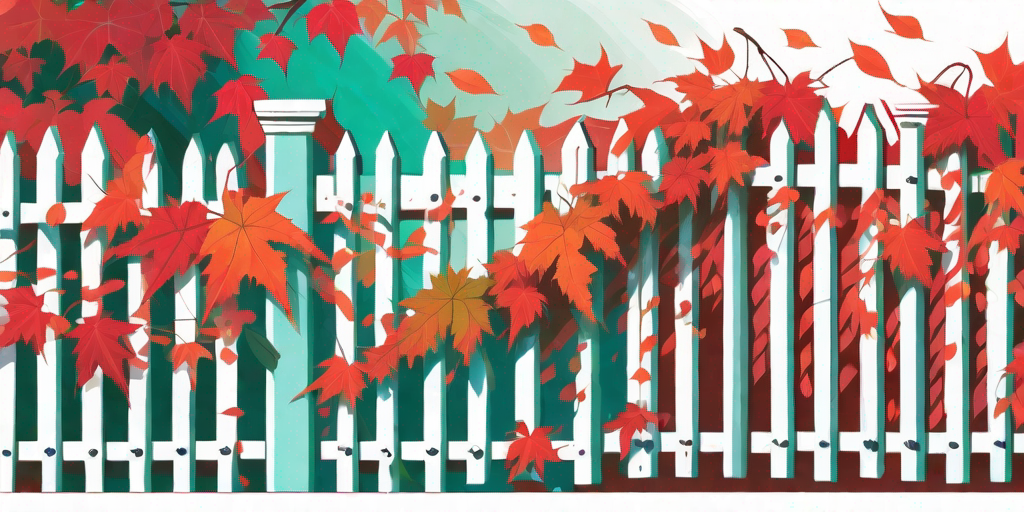
If you're looking to add a touch of drama and a splash of color to your garden, look no further than the Virginia Creeper. This cheeky vine is not only easy to grow and maintain, but it also offers a stunning display of foliage that changes with the seasons. So, if you're ready to transform your garden into a vibrant paradise, let's dive into the world of Virginia Creeper.
What is Virginia Creeper?
Virginia Creeper, also known as Parthenocissus quinquefolia, is a fast-growing vine native to eastern and central North America. It's known for its five-leafed vine, hence the name quinquefolia, which means "five-leaved" in Latin. This deciduous plant is a favorite among gardeners due to its versatility and stunning autumnal color display.
But don't be fooled by its beauty. Virginia Creeper is a bit of a rogue in the plant world. It's a vigorous climber, using small forked tendrils tipped with tiny adhesive pads to scale walls and trees. If left unchecked, it can quickly take over your garden. But with the right care and attention, it can be a real showstopper.
How to Grow Virginia Creeper
Now that we've introduced you to this charming rogue, let's get down to the nitty-gritty of growing Virginia Creeper. Don't worry, it's not as daunting as it might sound. In fact, Virginia Creeper is one of the easiest plants to grow. All it needs is a bit of sun, a bit of water, and a bit of love.
First things first, you'll need to find a suitable spot for your Virginia Creeper. It's not particularly fussy about soil, but it does prefer a well-drained spot with full sun to partial shade. Once you've found the perfect spot, simply dig a hole twice the size of the root ball, place the plant in the hole, and backfill with soil. Water thoroughly and watch as your Virginia Creeper begins to take off.
Propagating Virginia Creeper
Virginia Creeper can be propagated through seeds, cuttings, or layering. If you're feeling adventurous, you can try your hand at all three methods. But for the sake of simplicity, we'll focus on the easiest method: cuttings.
To propagate Virginia Creeper from cuttings, simply take a cutting of about 6 inches from a healthy plant. Remove the leaves from the bottom half of the cutting and dip the cut end in rooting hormone. Then, plant the cutting in a pot filled with potting mix and water thoroughly. Place the pot in a sunny spot and keep the soil moist. In a few weeks, you should see new growth.
Maintaining Virginia Creeper
Now that you've successfully grown your Virginia Creeper, it's time to learn how to maintain it. As we mentioned earlier, Virginia Creeper can be a bit of a rogue if left unchecked. But with regular pruning and some TLC, you can keep your Virginia Creeper in check and enjoy its stunning display year after year.
Pruning should be done in late winter or early spring before new growth begins. Simply cut back the vines to the desired length and remove any dead or damaged wood. If your Virginia Creeper has become too unruly, don't be afraid to cut it back hard. It's a tough plant and will bounce back quickly.
Dealing with Pests and Diseases
Virginia Creeper is generally a hardy plant, but it can occasionally fall victim to pests and diseases. Common pests include aphids and scale insects, while common diseases include leaf spot and powdery mildew.
To keep pests at bay, regularly inspect your Virginia Creeper for signs of infestation and treat with an appropriate insecticide if necessary. To prevent diseases, ensure your Virginia Creeper is well-watered and has good air circulation. If your plant does become diseased, remove the affected parts and treat with a suitable fungicide.
FAQs
- Is Virginia Creeper poisonous?
Yes, Virginia Creeper is poisonous if ingested. It can also cause skin irritation in some people. Always handle with care and keep out of reach of children and pets.
- Can Virginia Creeper damage walls?
While Virginia Creeper can attach itself to walls with its adhesive pads, it generally does not cause damage. However, it can cause problems if it gets under siding or shingles.
- How fast does Virginia Creeper grow?
Virginia Creeper is a fast-growing plant, capable of growing up to 20 feet in a single season.
Conclusion
There you have it, a cheeky guide to growing and maintaining Virginia Creeper. With its stunning foliage and easy-care nature, it's no wonder this plant is a favorite among gardeners. So why not give it a try? With a bit of love and attention, you can transform your garden into a vibrant paradise. Just remember, Virginia Creeper is a bit of a rogue, so keep it in check and enjoy the beauty it brings to your garden.















